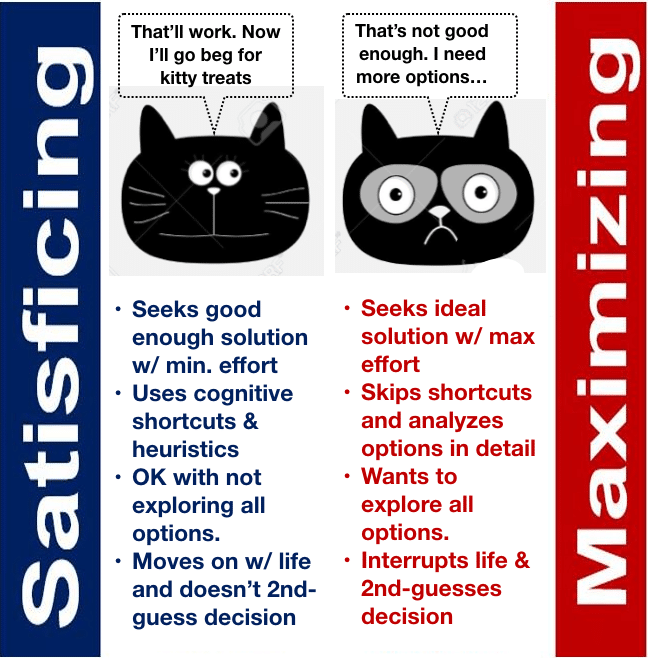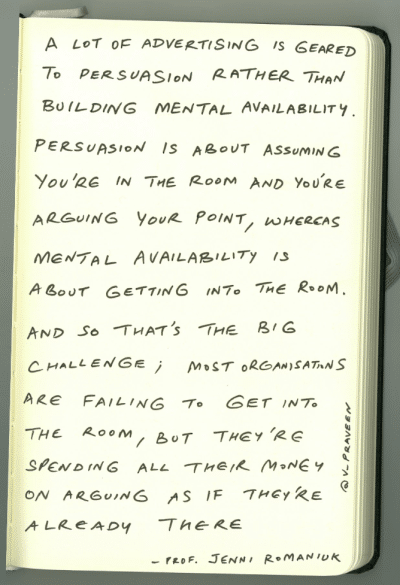
Most business owners and marketers have a blind spot that screws up their advertising.
They don’t even know they’re making this assumption when they make it, so they’d never think to question it.
They assume that people who buy their product or service are looking to maximize their purchase.
Maximize as in willing to spend the time and energy to make the best possible purchasing decision.
The highest performance and quality for the least amount.
But it is only in rare occasions that anyone ever spends the time and energy to really maximize a purchase.
99% of what you buy isn’t maximized. It’s satisficed.
If you’ve never heard of “satisficing” before, here’s a handy chart to explain it:

In other words, you spend the vast majority of your money by choosing easily and quickly arrived-at, good-enough solutions.
And when doing that you rely on cognitive shortcuts, such as the following:
- You get what you pay for
- A too cheap product or service probably isn’t any good
- A premium price often indicates premium quality
- If it’s popular with your kind of people, it’s probably the right answer
- Branded products or companies that you’ve heard of are likely better than off-branded or generic alternatives
- It’s easier to find an expert you like and trust than to try to become your own expert
But the biggest thing to understand for satisficing is that ease and speed matter most.
If customers think of you first and feel the best about you when they need what you sell, you win the speed part of the game.
If you are easy and convenient to do business with, you win the ease part of it.
If you win both parts consistently, you’ll dominate your market and very quickly grow rich.
Why This Matters for Your Ads
 If you’re making the mistake most owners and marketers make, then your ads will:
If you’re making the mistake most owners and marketers make, then your ads will:
- Attempt to convince people that you represent the best bang for their buck
- Push a faux Unique Selling Proposition onto your audience
- Spend a lot of time “educating the buyer” and giving people “the facts”
But if you understand that your product or service is very likely satisficed rather than maximized, your ads will
- Aim to make you thought of first when customers need what you sell
- Foster a sense of connection with your audience
- Tell your story in a way that creates trust
See the difference that makes?
And if you really want to win the satisficing game, you’ll ensure that your ads:
- Cause listeners to imagine themselves in their moment of need, and then easily solving it by choosing you
- Provide prospects with an easy script to follow that’ll get them what they want (by doing business with you)
So ask yourself this:
Are your prospects satisficing or maximizing?
And are your ads aimed at winning the type of buying decision that your customers are actually making?
If you answered “no” to that last question, I’d be happy to help.
- Getting a Foot in the Door — Of Perception - November 27, 2025
- What Digital Superstars Know About Offline Advertising - November 17, 2025
- Unmistakable: A Tale of Two Boots and Branding Done Right - November 8, 2025
